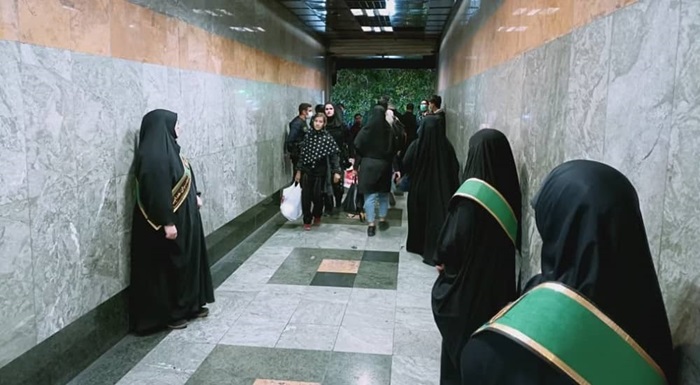

This decision emerges as part of a broader strategy to stabilize the regime amidst the ongoing power struggles within its ruling factions.
On Saturday, April 13, Ahmadreza Radan, the chief of the State Security Forces, announced the enforcement of a rigorous scheme known as “Hijab and Chastity,” targeting all public spaces. This initiative has been portrayed by state-affiliated media as a protective measure for public morality.
“Police, while ensuring the observance of ethical standards and the privacy of chastity by the citizens, are duty-bound to legally confront those who violate hijab and chastity laws,” Radan stated, emphasizing the legal ramifications for non-compliance.
This renewed focus on hijab enforcement aligns with directives from Ali Khamenei, the Supreme Leader, who recently urged law enforcement agencies to intensify their crackdown on what he termed “religious norm violations.” During a speech marking Eid al-Fitr on April 10, Khamenei declared, “The Islamic Republic is not seeking to forcibly convert anyone to religion, but it must confront religious norm violations.”
Hijab and Chastity Bill: Parliamentary Commission Approves 39 Articles
The legal commission of mullahs’ parliament has so far examined/ adopted 39 of 70 articles renamed “Supporting the Family through Promotion of the Culture of Chastity and Hijab” bill.https://t.co/H1igiGcXvq— Women's Committee NCRI (@womenncri) August 16, 2023
The push for strict adherence to hijab laws follows the tumultuous events of 2022, marked by widespread uprisings after the death of Mahsa Amini. Amini was detained by the morality police for allegedly not adhering strictly to the hijab regulations and later died in custody, sparking protests against the regime’s oppressive tactics and broader issues such as authoritarian governance and economic mismanagement. The demonstrations persisted for months, despite harsh crackdowns by security forces.
In response to the civil unrest, the clerical regime drafted the “Hijab and Chastity” bill, initially comprising 9 articles and later expanded to 72 after parliamentary review. Although the bill was quickly moved through the legislative process without debate, its implementation has been stalled by various state bodies, likely due to fears of reigniting protests. Currently, the regime’s determined effort to enforce these laws highlights deep-seated anxieties about the potential for continued societal upheaval.
#Iran News in Brief
The clerical regime’s Parliament Research Center has proposed a bill on #hijab, which allows the morality police patrols to enforce financial penalties on those they perceive as violating the dress code.https://t.co/qIAITfXbax pic.twitter.com/woT8JaTLMS— NCRI-FAC (@iran_policy) July 26, 2023
As Iran stands at this crossroads, the international community and human rights organizations are closely monitoring the situation, concerned about the implications of these repressive measures on the fundamental rights and freedoms of Iranian citizens.
This strategic emphasis on controlling social behavior through legal mandates on attire and public behavior underscores a critical phase in Iran’s ongoing struggle with its domestic challenges and its positioning on the global stage.

MEK Iran (follow us on Twitter and Facebook), Maryam Rajavi’s on her site, Twitter & Facebook, NCRI (Twitter & Facebook), and People’s Mojahedin Organization of Iran – MEK IRAN – YouTu







